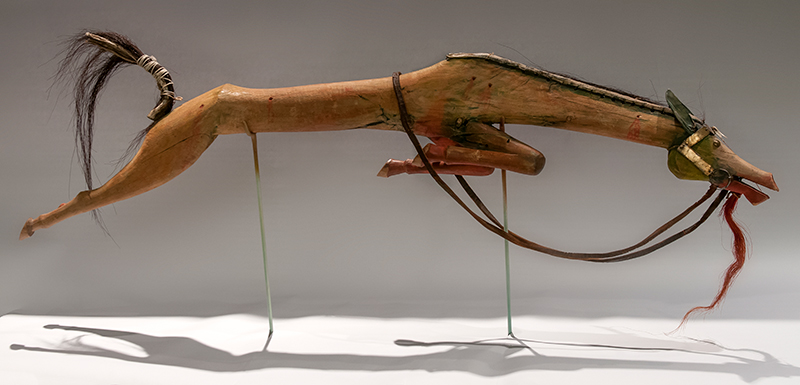Great Horse Effigy

| Maker | Attributed to No Two Horns |
| Date of Creation | Late 1800s |
| Location | South Dakota |
| Materials | Wood, horse hair, brass, leather, paint |
| Institution | South Dakota Historical Society |
| Credit Line | N/A |
| Accession Number | 1974.002.122 |
| Photo Credit | Museum of the South Dakota State Historical Society |
The horse has long been an important symbol to the indigenous people of the Great Plains. This dance stick carved into the effigy of a horse is a great example of how horses are often immortalized in Lakota art. The effigy is approximately 38.5 inches long and carved from a single piece of wood. The ears and bridle and reigns are made of leather while the main and tail are made of horsehair. The bridle decorated with brass sheets and the eyes are brass pins. Along parts of the body remnants of blue paint remain. The effigy depicts a wounded horse in the last moments of life. The horse is stretched out into a full gallop with the neck twisted and mouth gaping and ears pin flat against the head. There are 11 holes throughout the body of the horse with bright red paint around them. The open mouth is also painted red with red horsehair hanging from it. The red paint and horsehair depict blood flowing from the wounded animal. The outstretched posture, the red pain, the open mouth, the curvature of the neck all call to horse in its final moments of life, a horse twisting and writhing in pain, leaping literally from life to death. No Two Horns, a renowned Lakota artist and leader, is likely the maker. The piece is very similar to other works by him. When No Two Horns was a young warrior he participated in the battle of Little Big Horn and had a blue roan horse shot out from under him, an event that he remembered for the rest of his life.
